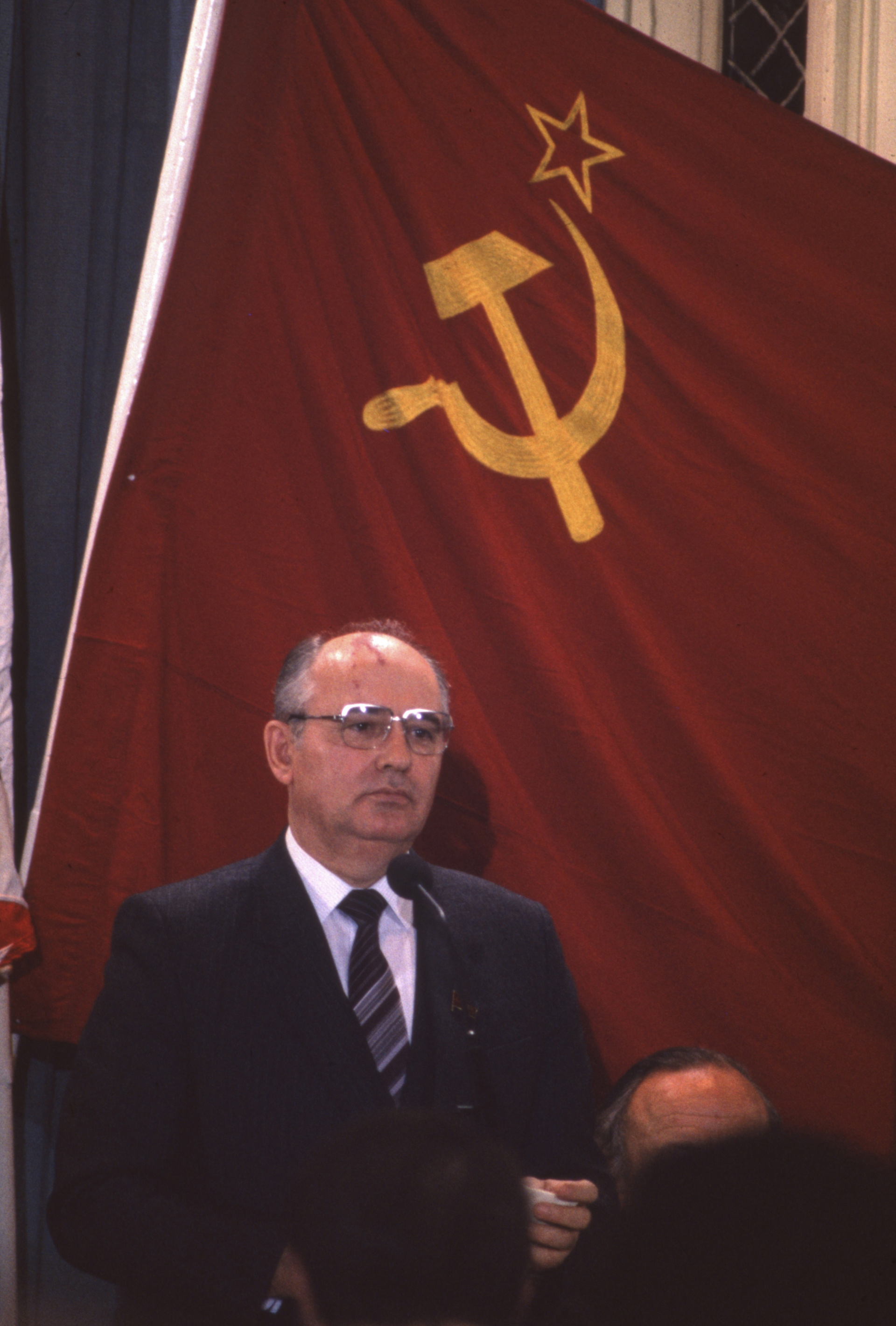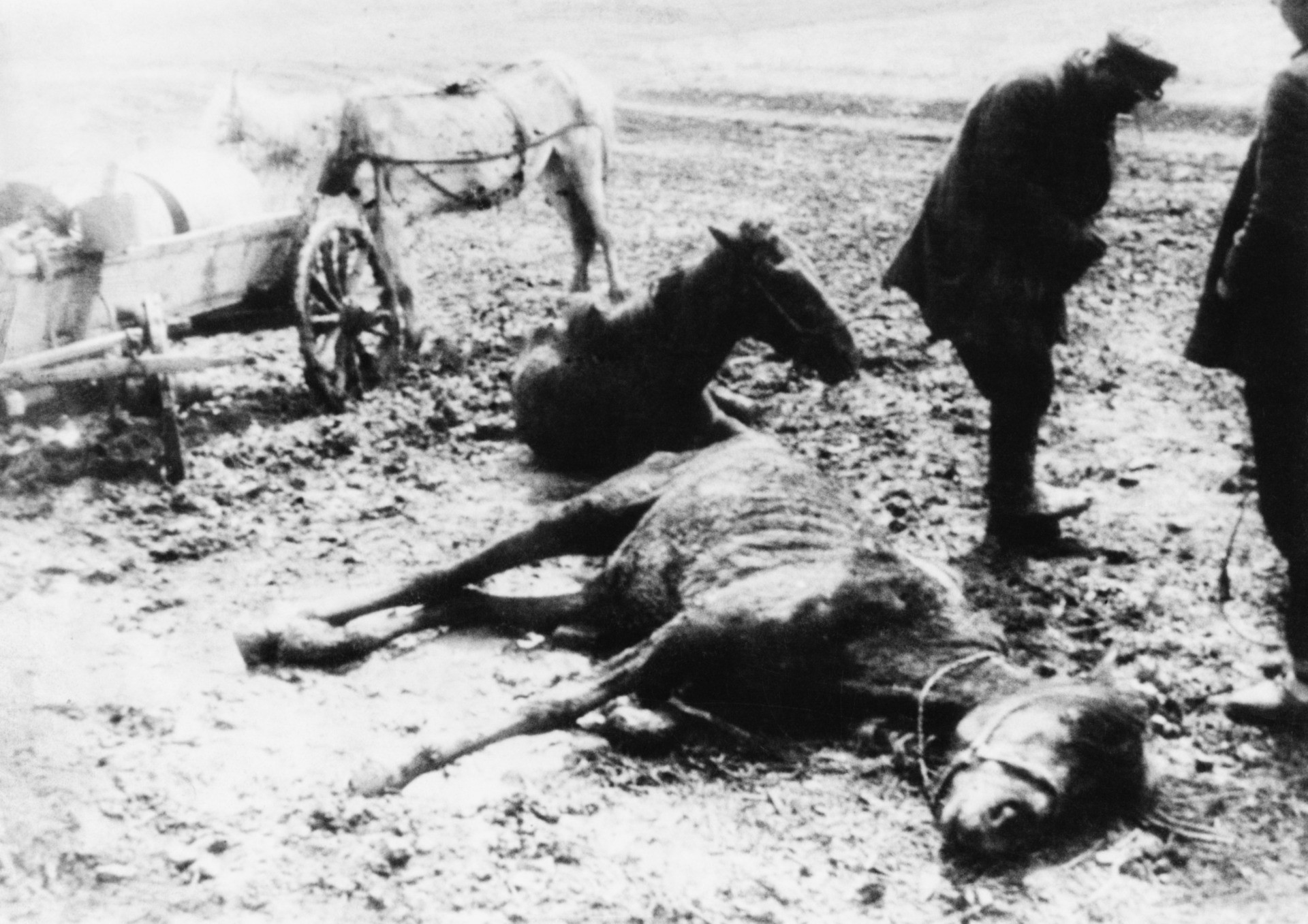
You can always count on the New York Times to put its liberal spin on events. For instance, this breaking news headline: “Mikhail Gorbachev, the Soviet leader who transformed the map of Europe and presided over the end of the Cold War, has died at 91.”
We can see the spin here: the Times gives Gorbachev credit for being the doer, using the two active-voice verbs “transformed” and “presided.” In other words, the Times is awarding the deceased communist kudos for ending the Cold War and liberating Eastern Europe. Not someone such as, say, the anti-communist Ronald Reagan or other heroes of anti-Soviet resistance.
Breitbart News has already posted an obituary for Gorbachev. So let’s focus on how the Times’ obit chose to remember his life. As we’ll see, the key theme is remembering Gorbachev as the good guy, while downplaying the role of anti-communists who did as much or more to actually end communism.
The Times lays out the case for Gorbachev in the article’s text. According to the newspaper, he “set in motion a series of revolutionary changes that transformed the map of Europe and ended the Cold War that had threatened the world with nuclear annihilation.” Got that? Gorbachev not only liberated Europe from communism but also lessened the risk of nuclear war. But of course, since the Times generously describes him as “a man of openness, vision and great vitality,” how could he do anything less?
In the Times’ view, his legacy stands as “decisively altering the political climate of the world.” Yes, without a doubt, the Times piles it on thick—Gorbachev wasn’t perfect, the article concedes, but at least he wasn’t a Republican.

President Ronald Reagan delivers his iconic speech at the base of the Brandenburg Gate in West Berlin near the Berlin wall on June 12, 1987, where he demanded, “Mr. Gorbachev, tear down this wall!” (MIKE SARGENT/AFP via Getty Images)
But there is another way of looking at Gorbachev, who ruled the Soviet Union from 1985 until its dissolution in 1991. He was a careerist communist who wormed his way to the top of the bureaucratic heap in Moscow by brown-nosing. For instance, as an apparatchik on the make, he had this to say about the ghost-written memoir of one of his predecessors in the Kremlin corner office, Leonid Brezhnev. Said the young Gorbachev: “Communists and all the workers of Stavropol express limitless gratitude to Leonid Ilyich Brezhnev for this literary work of deep philosophical penetration.”
Upon taking the top job in the USSR, Gorbachev could see that his empire was falling behind the U.S. and the West. And that falling behind was deepened by the energetic polices of the American president Ronald Reagan. Beginning in 1983, Reagan was advancing the Strategic Defense Initiative, a high-tech anti-missile effort that the low-tech Soviets couldn’t touch—and they knew it. (In May, this author detailed some of this history, including the the key supporting role played by the 40th president’s national security adviser, the late Robert C. McFarlane.)

General Secretary Mikhail Gorbachev addresses the 27th Congress of the Communist Party of the Soviet Union in Moscow, 1986. (Slava Katamidze Collection/Getty Images)

Mikhail Gorbachev circa July 1985. (Jacob SUTTON/Gamma-Rapho via Getty Images)
Lest the reds be left in the dust, Gorbachev resolved to try something new. The Times recalls this sequence of events but makes a telling omission. The article gives Gorbachev credit for the de-communizing concepts of glasnost (openness) and perestroika (restructuring), and that’s true, as far as it goes.
However, the Times does not mention that the first of Gorbachev’s new ideas was uskoreniye, which means “acceleration” in Russian–as in, work harder. In other words, Gorbachev’s first plan wasn’t really reform at all; it was, in American parlance, speed up the line. That can be a good idea if it’s coupled with higher pay, as it was in the U.S., but if it just meant working harder for the same lame Post Office of a system that the Soviets had, then it was no paradise for workers. Not surprisingly, uskoreniye didn’t work. Only then did Gorbachev try things that were truly different from the same old Sovietism: glasnost and perestroika.
And uskoreniye is not the only thing the Times left out as it sought to give Gorbachev the credit for undoing communism. Also left out were the roles of Russian dissidents Aleksandr Solzhenitsyn, Andrei Sakharov, and Natan Sharansky, all of whom worked to undermine the Soviet system. Also elided: the historic role of Polish labor activist Lech Walesa, who united the workers against communism.

Friends and relatives of striking workers listen to the news given by Lech Walesa (center) outside the gates of the Lenin Shipyard in Gdansk, Poland, on August 25, 1980. The Gdansk’ shipyard strike was the genesis of the “Solidarnosc” (Solidarity) movement in Poland that helped topple the Soviet empire. (JORMA PUUSA/Getty Images)
Now one might say that this was an article about Gorbachev and not those other figures. And yet by not mentioning them, the Times deprives Gorbachev’s career of needed context. As it is, the piece seeks to leave us with the impression that Gorbachev was the active-voice mastermind of events, as opposed to the passive-voice victim of an avalanche of circumstance.
Of course, the Times has a long history of whitewashing reds. Back in 1932, its Moscow correspondent, Walter Duranty, was both a communist sympathizer and a man on the take. In that year he was awarded the Pulitzer Prize for his “journalism.” In fact, it soon enough became clear that Duranty was covering for Josef Stalin and the Soviets; most notoriously, he was hiding the truth about the deliberate mass starvation of Ukraine, which took millions of lives.

Walter Duranty, the Moscow correspondent for the New York Times who denied Stalin’s genocide of the Ukrainians, reading a copy of “Pravda,” circa 1925. (James Abbe/Hulton Archive/Getty Images)

Dead and dying horses near a Belgorod collective farm during the Soviet’s man-made Holodomor famine in Ukraine in 1934. (Daily Express/Hulton Archive/Getty Images)
By contrast, true journalists exposed the truth. One such was Malcolm Muggeridge, a fellow correspondent in Moscow in the early 1930s. Of course, because he was an anti-communist, Muggeridge did not receive a Pulitzer. Muggeridge said of Duranty: “He was not only the greatest liar among the journalists in Moscow, but he was the greatest liar of any journalist that I ever met in 50 years of journalism.”
To this day, the Times mumbles around about the long-ago Pulitzer for its man; a statement notes defensively that the Pulitzer board found “no clear and convincing evidence of deliberate deception.” In other words, the cover-up continues. (For a clear-eyed look at Duranty and the enormity of the mass-murder that he covered up, there’s the 2019 movie about a hero journalist who uncovered the Ukraine tragedy, Mr. Jones.)
So this is how the New York Times does history. Its way. The liberal way. Seems to be its only way.






